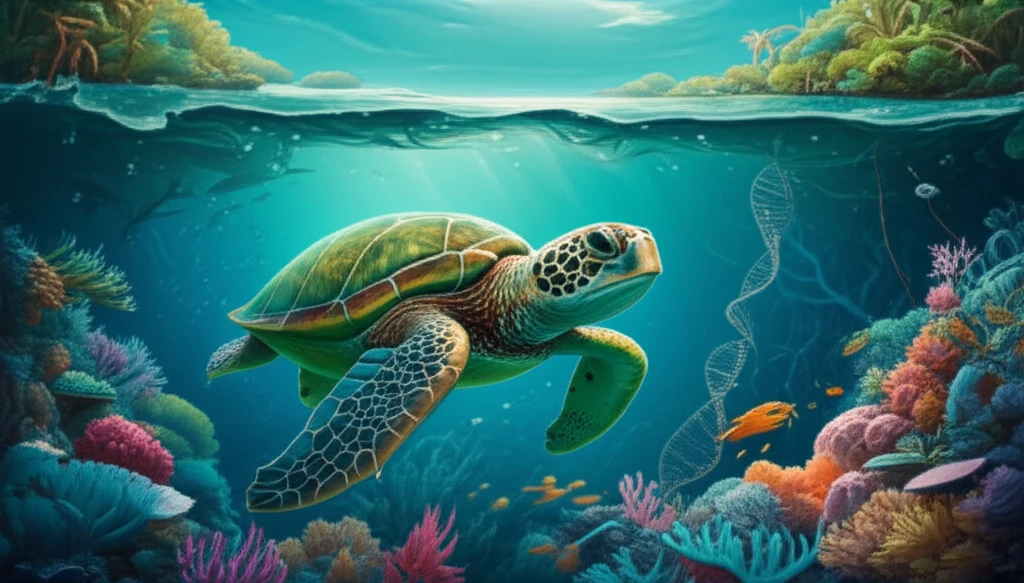
Turtle Tales: Unlocking Genetic Secrets of Brazil's Green Sea Turtles
"Genetic Research Reveals Key Insights into the Diversity and Origins of Green Sea Turtles in a Vital Brazilian Estuarine Complex"
Sea turtles, ancient mariners of our oceans, undertake incredible journeys across vast distances. However, the lives of juvenile sea turtles remain largely a mystery. These young turtles spend much of their time in feeding grounds (FGs), areas where they can grow and mature. These FGs are often populated by turtles from various birthplaces, creating what scientists call 'mixed stock populations.'
A groundbreaking study focused on the green sea turtles (Chelonia mydas) inhabiting the Paranaguá Estuarine Complex (PEC) in Brazil. This unique location, a designated Natural World Heritage site, provides a crucial habitat for these creatures. Researchers sought to understand the genetic makeup of these turtles, trace their origins, and uncover aspects of their demographic history.
By analyzing mitochondrial DNA (mtDNA) from stranded green sea turtles within the PEC, scientists were able to compare their genetic signatures with those of nesting populations across the Atlantic. This allowed them to estimate the contributions of different rookeries (nesting sites) to the PEC feeding ground, revealing important connections and historical patterns.
Decoding the DNA: What the Genetics Reveal

Researchers collected tissue samples from 60 stranded green sea turtles in the PEC. They then analyzed a specific region of their mitochondrial DNA (mtDNA). mtDNA is passed down from mother to offspring, making it a valuable tool for tracing lineages and population structures.
- Genetic Diversity: The study identified seven main mtDNA haplotypes (CM-A1, CM-A5, CM-A6, CM-A8, CM-A10, CM-A32, and CM-A46). The most common was CM-A8, followed by CM-A5.
- Natal Origins: Analysis revealed that the green turtles in PEC share genetic signatures with nesting females from Ascension Island, Guinea Bissau and Aves Island/Surinam.
- Population Expansion: Genetic data suggests a population expansion occurred approximately 20,000-25,000 years ago, following the last Glacial Maximum.
Protecting the Future of Brazil's Green Sea Turtles
This research provides critical insights for conservation efforts. By understanding the genetic diversity and origins of green sea turtles in the PEC, conservationists can develop more effective strategies to protect this vital habitat and ensure the long-term survival of these magnificent creatures. Protecting the PEC and similar feeding grounds is essential for the recovery of green sea turtle populations in the Atlantic.
